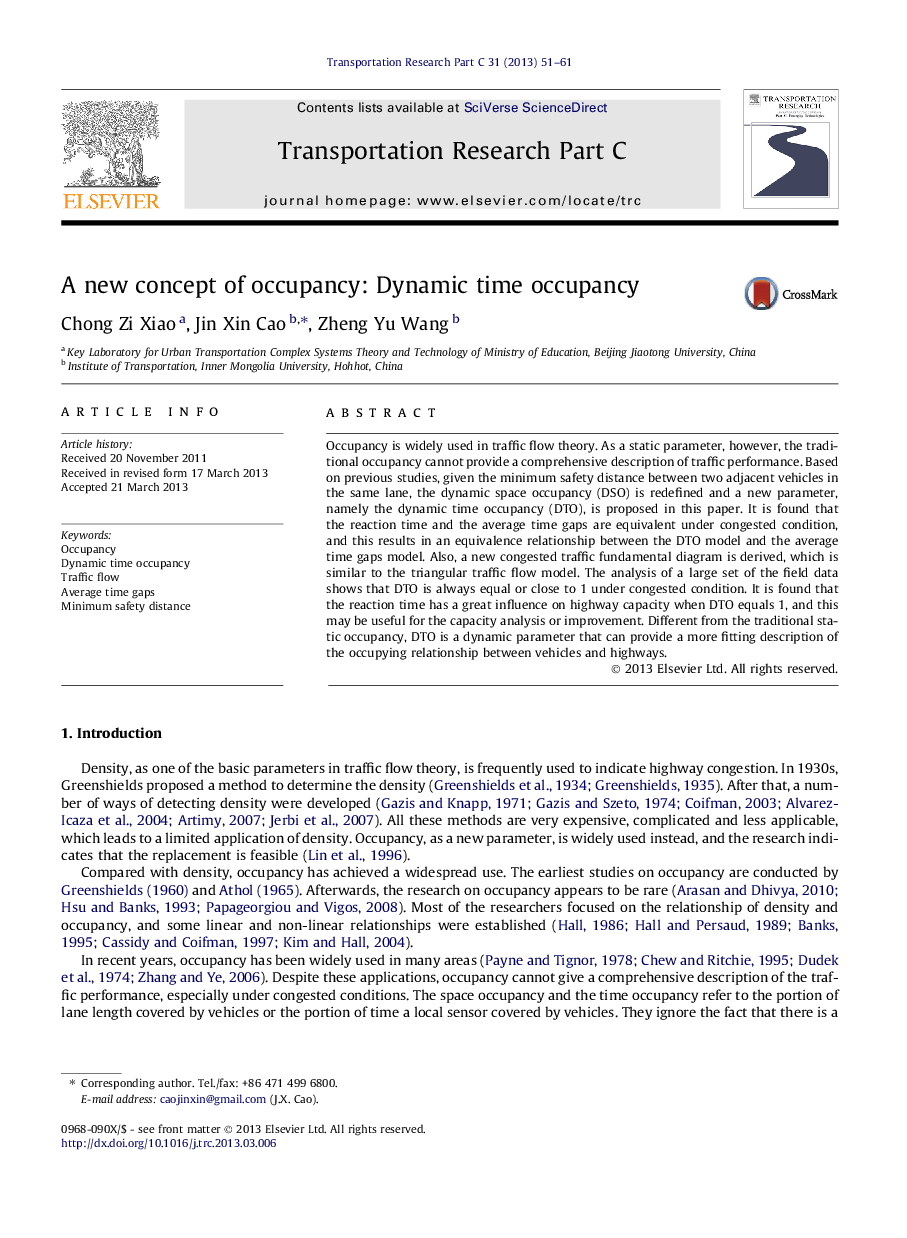| Article ID | Journal | Published Year | Pages | File Type |
|---|---|---|---|---|
| 525388 | Transportation Research Part C: Emerging Technologies | 2013 | 11 Pages |
•We redefined the dynamic space occupancy (DSO).•We defined a new traffic flow parameter, namely the dynamic time occupancy (DTO).•Reaction time and average time gaps are equivalent under congested condition.•An equivalence relationship between the DTO model and the average time gaps model was proved.•A new congested traffic fundamental diagram was derived.
Occupancy is widely used in traffic flow theory. As a static parameter, however, the traditional occupancy cannot provide a comprehensive description of traffic performance. Based on previous studies, given the minimum safety distance between two adjacent vehicles in the same lane, the dynamic space occupancy (DSO) is redefined and a new parameter, namely the dynamic time occupancy (DTO), is proposed in this paper. It is found that the reaction time and the average time gaps are equivalent under congested condition, and this results in an equivalence relationship between the DTO model and the average time gaps model. Also, a new congested traffic fundamental diagram is derived, which is similar to the triangular traffic flow model. The analysis of a large set of the field data shows that DTO is always equal or close to 1 under congested condition. It is found that the reaction time has a great influence on highway capacity when DTO equals 1, and this may be useful for the capacity analysis or improvement. Different from the traditional static occupancy, DTO is a dynamic parameter that can provide a more fitting description of the occupying relationship between vehicles and highways.
